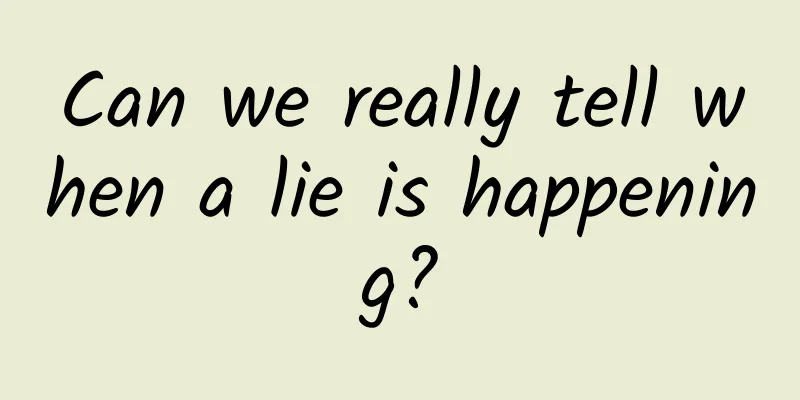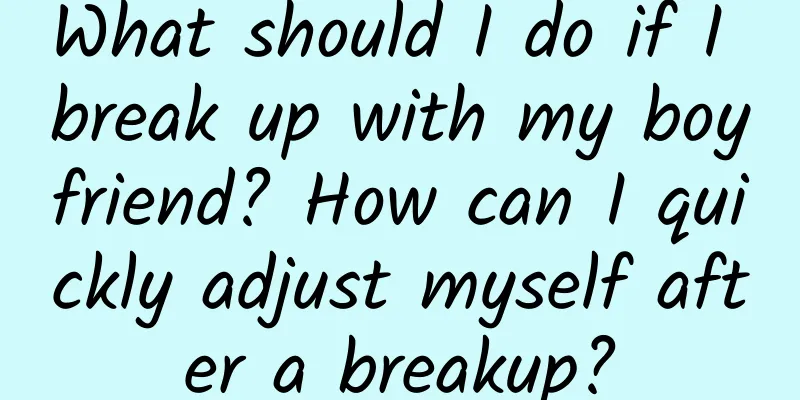Can we really tell when a lie is happening?

|
Leviathan Press: I have recently become addicted to watching videos of police/FBI interrogations of some cases, such as Christensen, the murderer of Yingying Zhang, the Florida husband murder case, the Canadian Air Force colonel murder case, etc. The most interesting thing here is the external performance of these suspects when facing the police interrogation process. Obviously, their answers are full of lies. In order to evade legal sanctions, each suspect's performance is different, which also shows the complexity of lies from one aspect. Screenshot of Christensen (right) being interrogated. © youtube Law enforcement officers always want to analyze the suspect's body language from the perspective of criminal psychology, such as body posture, facial micro-expressions, etc., but these non-verbal clues do not seem to be necessarily related to liars, and in many cases, they even lead to some misjudgments by the police. 17-year-old Marty Tankleff found his parents dead in their home on Long Island. His mother was stabbed and his father was beaten to death. The police thought he was too calm and thought he was lying, even though he claimed to be innocent. He was charged with murder and spent 17 years in prison. In another case, 16-year-old Jeffrey Deskovic was so distraught and eager to help detectives solve the case after his high school classmate was strangled that police also believed he was lying and sentenced him to 16 years in prison. Homicide detectives interview Marty Tanglev outside his home on September 7, 1989. © Tony Jerome / Newsday RM / Getty One of these two people was too calm, and the other was too panicked. Why were these two completely different emotions regarded by the police as clues to hidden crimes? So says Maria Hartwig, a deception researcher and psychologist at John Jay College of Criminal Justice at the City University of New York. Tangrev and Depozovic, who were later exonerated, were victims of a common misconception: People generally believe that you can tell if a person is lying by their behavior. In every culture, people believe that behaviors such as averting eyes, fidgeting, and stuttering can reveal a person is lying. (journals.sagepub.com/doi/10.1177/0022022105282295) In fact, after more than a decade of research, the evidence to support this claim is still thin. “One of the problems we have as researchers on lying is that everyone thinks they know how lying works,” says Hartwig, who co-authored a study on nonverbal cues for lying published in the Annual Review of Psychology. This overconfidence can lead to serious misjudgments, as happened to Tangrev and Depozovich. “Polygraphy errors can have serious consequences for society and for the people who are misjudged,” says Hartwig. “They are very costly.” (www.annualreviews.org/doi/10.1146/annurev-psych-010418-103135) Psychologists have long known how difficult it can be to identify liars. In 2003, psychologist Bella DePaulo, now at the University of California, Santa Barbara, and her colleagues combed through the scientific literature and collected 116 experiments that compared people's behavior when they told lies and when they told the truth. The experiments included more than 100 possible nonverbal cues, including averting eyes, blinking, raising the voice (this behavior has nothing to do with the content of the speech, so it is also a nonverbal clue), shrugging, changing posture, and moving the head, hands, and limbs. The results found that none of them could indicate a liar, although some indicators were weakly correlated, such as dilated pupils and a slight increase in the pitch of the voice (which is almost imperceptible to the human ear). (smg.media.mit.edu/library/DePauloEtAl.Cues%20to%20Deception.pdf) Three years later, DePaul and Charles Bond, a psychologist at Texas Christian University, reviewed 206 studies. These studies involved a total of 24,483 observers, who had to judge the authenticity of 6,651 pieces of information given by 4,435 people. Whether it was law enforcement experts or student volunteers, the accuracy rate of judging the truth did not exceed 54%, which was only slightly higher than chance. The accuracy rate of a single experiment ranged from 31% to 73%. The smaller the scale of the experiment, the greater the difference. Bond said: "In small studies, the luck factor is more obvious. When the research scale is large enough, luck can only account for half." Timothy Luke, a psychologist and applied data analyst at the University of Gothenburg in Sweden, says the size of the effect suggests that some experiments may have higher accuracy rates due to chance. “If we haven’t found larger effects by now, it’s probably because they don’t exist,” he says. (journals.sagepub.com/doi/10.1177/1745691619838258) However, the police usually have a different view. They believe that the experiments are not real enough. After all, they say, the volunteers are mostly students who sit in a psychology laboratory and are instructed to lie or tell the truth, while the suspects are questioned in an interrogation room or on the witness stand, and the consequences they face are completely different. Joseph Buckley, president of the John Reed Law Firm, which trains thousands of law enforcement officers each year in behavioral-based polygraphs, said: "The 'guilty' in the experiment has nothing at stake. That's not a real, natural motivation." Samantha Mann, a psychologist at the University of Portsmouth in the UK, has been studying deception for 20 years. When she first got into the field, she thought the police's objections were justified. To delve deeper into the issue, she and her colleague Aldert Vrij watched several hours of videotaped police interviews of a convicted murderer and selected three confirmed truths and three confirmed lies. Mann then showed 65 British police officers the six statements and asked them to identify which was true and which was false. Because the interviews were conducted in Dutch, the officers relied entirely on nonverbal cues. The officers were correct 64 percent of the time, she said, which is better than chance, but still inaccurate. The officers with the lowest accuracy rates all said they relied on traditional nonverbal cues, such as "liars avoid eye contact" or "liars fidget." In fact, the killer maintained eye contact and was calm as he lied. "This guy was clearly nervous, there's no doubt about that" - but he controlled his movements, defying stereotypes of liars, Mann said. Mann and Frige later conducted a study in which 52 Dutch police officers watched televised press conferences by several murderers of relatives, who denied their crimes and expressed extreme grief. The officers were able to correctly identify the truth from the falsehood less than 50 percent of the time. The officers with the lowest accuracy believed that the murderers' expressions of emotion were genuine. But what does this mean? "If a husband kills his wife, he might show sadness for a variety of reasons, like remorse or being caught by the police," Mann said. "Nonverbal behavior is very specific. If you focus on nonverbal behavior like emotion, you're going to make mistakes." A few years later, Hartwig and Bond verified these results in a larger experiment. They reviewed the research literature comparing people's ability to detect high-cost lies and low-cost lies. They found no evidence that people were any better at detecting lies told by criminals or suspects wrongly accused in police investigations than they were at detecting lies told by lab volunteers. (onlinelibrary.wiley.com/doi/abs/10.1002/acp.3052) Whether it was a serial killer or a student in a lab, the people in all of these experiments told their lies out loud. In a study published in 2019, Mann looked at nonverbal deception, such as attempts to cover up illegal behavior—the kind of deception you come into contact with when detecting bombers and smugglers. She recruited 52 college student volunteers and had half of them transport a notebook that allegedly contained sensitive photos from one city to another via ferry. The volunteers were told to blend in with the crowd and not look “suspicious” because people would try to pick them out. The other half of the volunteers were asked to transport a regular cell phone, with no instructions to cover up their actions. (onlinelibrary.wiley.com/doi/abs/10.1002/acp.3622?af=R) Mann then showed the ferry video to another 104 volunteers and asked them to identify the "smugglers". The volunteers were correct less than half of the time. In subsequent interviews, the "smugglers" said they were nervous, but they deliberately acted normal, using methods such as listening to music or looking at their phones to calm themselves down. Then Mann upped the ante. She regrouped 60 volunteers and had half of them smuggle an envelope of Russian, Egyptian, and South Korean currency, while the other half didn’t smuggle anything. But this time, Mann sent two researchers aboard the ferry to walk around and observe the passengers, seemingly comparing their faces to photos on their phones. A total of 120 volunteers tried to identify the "smugglers" in the video, but the accuracy rate was only 39.2%, far less than half. Mann said the reason is that the "smugglers" deliberately acted normal, while the "innocents" were just acting naturally. They were surprised by the sudden scrutiny, which was seen as a guilty behavior by the observers. Ronald Fisher, a psychologist at Florida International University, said the finding that liars can successfully hide their nervousness fills a gap in deception research. "There haven't been many studies comparing people's internal emotions to external manifestations that are noticed by other people," said Fisher, who trains FBI agents. "The key is that liars are more nervous, but it's just their internal emotions, not their external manifestations that other people observe." (journals.sagepub.com/doi/10.1207/s15327957pspr1003_2) These studies have led researchers to largely abandon the search for nonverbal cues to deception. But are there other ways to spot liars? Today, psychologists studying deception are focusing more on verbal cues, especially those that amplify the difference between a lie and the truth. For example, interrogators strategically extend the interrogation time to allow suspects to speak more freely. This may cause the liar to contradict himself. In one experiment, Hartwig taught this technique to 41 new police officers, and they achieved 85% accuracy on polygraphs, compared with 56% accuracy for 41 new officers who did not receive training. "It was a huge improvement," Hartwig said. (link.springer.com/article/10.1007/s10979-006-9053-9) Another interrogation technique exploits spatial memory, asking suspects or witnesses to briefly describe scenes related to the crime scene or alibi. Because this method can evoke more memories, the truth tellers will report more details. Last year, Mann and his colleagues published a study that simulated a spy mission. 122 participants met with an "agent" in a school cafeteria, exchanged a code, and then received a package. In a subsequent interview, participants were asked to describe their experience in the cafeteria. Those who were asked to tell the truth gave 76% more details than those who were asked to conceal the exchange of codes and packages. "When you describe it, you are reliving the event, so doing this can help recall," said Haneen Deeb, a psychologist at the University of Portsmouth and co-author of the experiment. (onlinelibrary.wiley.com/doi/abs/10.1002/acp.3646) The experiment was designed based on information provided by British police, who routinely use sketch interrogations and work with psychology researchers. It is part of a shift in Britain toward innocent interrogations, which have replaced accusatory interrogations since the 1980s and 1990s, when police were caught in scandals over wrongful convictions and mistreatment of suspects. Yet in the United States, such scientific reforms have yet to make significant inroads in police and other security agencies. For example, the Transportation Security Administration (TSA) of the Department of Homeland Security still uses nonverbal cues to screen airport passengers for further questioning. TSA agents are instructed to follow a checklist of suspicious behaviors to look for potential liars, including averted gaze (considered a sign of respect in some cultures), prolonged staring, rapid blinking, grumbling, whistling, exaggerated yawning, covering the mouth when talking, excessive agitation, and exaggerated dressing. All of these have been thoroughly disproven by researchers. Between 2015 and 2018, American Airlines received 2,251 formal complaints from passengers who said they were held for investigation because of their nationality, race, ethnicity or other reasons. With agents searching for suspects based on such vague and contradictory criteria, it’s no wonder they receive so many complaints. Congressional scrutiny of TSA airport screening methods dates back to 2013, when the U.S. Government Accountability Office (a branch of Congress that audits, evaluates government programs, and makes recommendations) reviewed the scientific basis for behavioral detection methods, found them insufficient, and recommended that the TSA reduce funding and cut back on the use of behavioral detection methods. In response, the TSA removed independent behavioral detection officers and reduced the list of indicators from 94 to 36, but still retained many indicators that had no scientific basis, such as excessive sweating. In response to a new round of congressional scrutiny, the TSA pledged in 2019 to tighten employee management and reduce inquiries. But the agency still values behavioral screening. As a Homeland Security official told congressional investigators, "common sense" behavioral indicators should be included in "reasonable and proper review procedures" even if they do not meet academic standards of scientific evidence. In a statement to Knowable, TSA media relations manager R. Carter Langston said, "TSA believes behavioral detection provides a critical and effective layer of security to the nation's transportation system." The TSA noted that in the past 11 years, two separate behavioral detections have successfully prevented three passengers from boarding flights with explosive devices. But Mann said it's impossible to measure the success of a program without knowing how many potential terrorists made it through security without being detected. In fact, in 2015, undercover Homeland Security agents carried simulated incendiary devices and live ammunition through airport security with a success rate of 95%. Subsequently, the acting director of the TSA was reappointed. In 2019, Mann, Hartwig and a host of other university researchers published a review evaluating the evidence for behavioral analysis screening, concluding that law enforcement should abandon this “fundamentally misguided” pseudoscience that could “harm individual life and liberty.” At the same time, Hartwig also worked with Mark Fallon, a former special agent of the U.S. Naval Criminal Investigative Service, former assistant director of the Department of Homeland Security, and national security expert, to develop a new, more scientific training curriculum for investigators. "Progress has been slow," Fallon said, but he hopes that future reforms will save people from unjust convictions and prevent tragedies like Jeffrey Deskovich and Marty Tangrev from happening again. For Tangrev, the stereotype of a liar is stubborn. He recently began practicing law after years of fighting for his exoneration. In the process, this taciturn, slightly nerdy man had to learn to express more emotions and, as crisis manager Lonnie Soury put it, "build a whole new narrative" for an innocent man who was wrongly accused. He coached Tangrev in this regard. It worked, and Tangrev was finally admitted to the New York Bar in 2020. Why is it so important to express feelings? Suri said: "People are very prejudiced." By Jessica Seigel Translated by Rachel Proofreading/Amanda Original article/www.theatlantic.com/science/archive/2021/03/how-to-spot-a-liar/618425/ This article is based on a Creative Commons License (BY-NC) and is published by Rachel at Leviathan The article only reflects the author's views and does not necessarily represent the position of Leviathan |
Recommend
What is the difference between tampons and sanitary napkins?
Tampons and sanitary napkins are both very privat...
What does menstrual bleeding mean?
As the saying goes, women are a kind of wonderful...
Who are the high-risk groups for diabetes?
1. The high-risk group for adult diabetes refers ...
What kind of water should I drink for cold uterus
People with cold uterus often have cold hands and...
What are the effects of CT scan during pregnancy?
CT is a common way of physical examination in med...
Tips for insomnia during pregnancy
Because every woman has different physical fitnes...
Can seafood mushrooms be eaten without blanching? How to judge whether seafood mushrooms are cooked or not
Seafood mushroom is a rare and delicious edible f...
Is it okay for pregnant women to eat MSG all the time?
Pregnant women pay more attention to their diet d...
Why is the epidemic in South Korea growing so fast? Why is the city not locked down?
The Korean people do not support the government&#...
What is the fetal movement like in the fourth month of pregnancy
In the second trimester, the pregnant woman will ...
Does Kidney Yang Deficiency Have an Impact on Pregnancy?
Yin deficiency and fire excess is a symptom of ki...
Why has Jianghan City in Hubei Province not been established? What is the possibility of Jianghan City being established?
The place called Jianghan City in Hubei Province ...
Why is menstruation delayed?
The length of the cycle varies from person to per...
What are the precautions during the confinement period?
Women need to take time off after giving birth na...
What is the cause of women's breast nodules
In recent years, more and more female friends aro...









